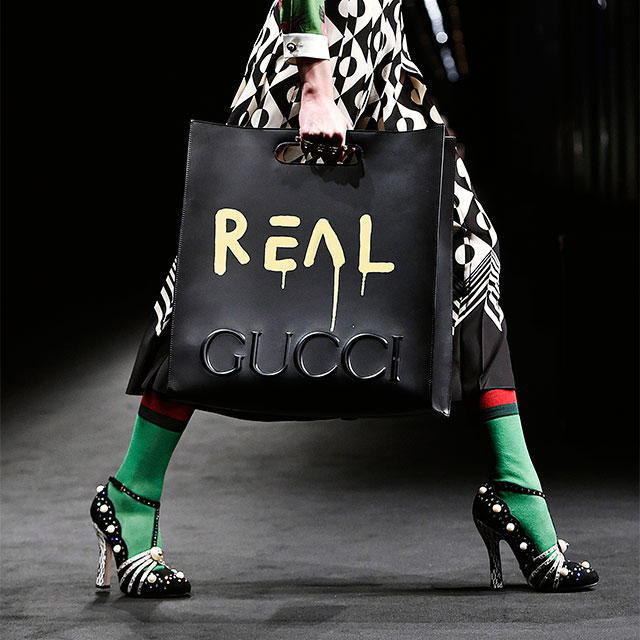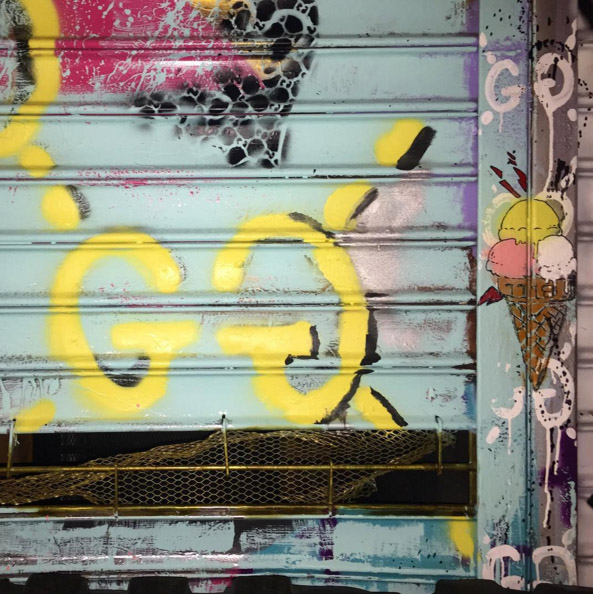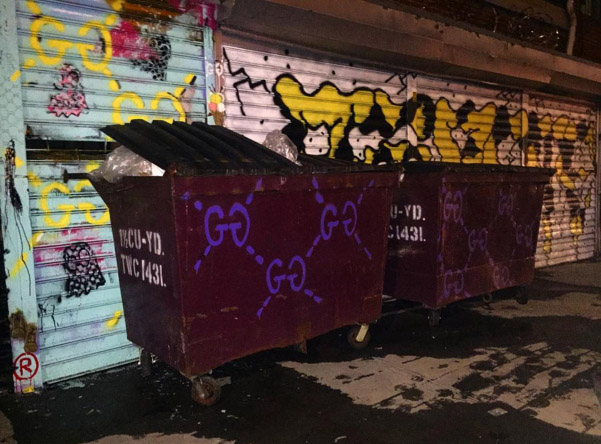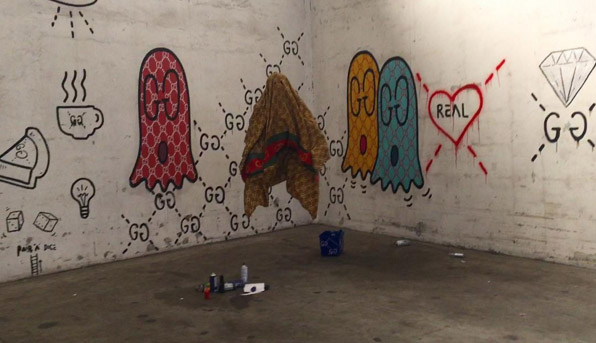In 1962, Andy Warhol’s Campbell’s Soup Cans was first exhibited, and promptly defamed as an example of the offensive commercialism threatening to ethically bankrupt the art world.
Even as Warhol grew to prominence as the highest-paid living American artist of the time, and pop-art drew the attention of a whole new audience to the medium, he was looked down upon as ‘less than’ his contemporaries.
The idea that an artist is a ‘sell-out’ if they even consider its commercial value still echoes throughout contemporary culture, but not to the extent that it once did. As brands hustle to connect with consumers on their terms, the relationship they build with artists has truly become one based on collaboration, rather than solely remuneration.
It was never more obvious than in February of 2016, when the models for Gucci’s fall runway took to the catwalk holding bags that appeared to have been tagged with spraypaint.
It was the work of Trevor Andrew, better known as TroubleAndrew or GucciGhost.
Of all the things that could have brought the Brooklyn-based artist to the attention of Gucci’s artistic director, Alessandro Michele, it was Andrew’s adaptation of the brand’s double-G logo in his graffiti.
Rather than request he remove it, Michele established a space for Andrew to continue his work, before bringing him in-house to work on the fall lineup.
Andrew was told nothing of the inspiration for the products he tagged. He was simply handed them, and given free reign to paint as he pleased.
That a graffiti artist would accept such an offer seems peculiar on the surface, but an incredible story lies beneath the stereotype.
Talking to Dazed, Andrew explained how a concept for a halloween costume evolved into the GucciGhost phenomenon.
“I think it’s just what Gucci represents. For me, the first luxury item I ever bought was a Gucci watch. It meant so much to me to get to a place where I could walk into the shop and buy this Gucci watch, so it held so much value beyond what I paid for it. But I don’t have the money to buy all the pieces that I want, so I started making my own world where everything around me is Gucci, especially things that I thought weren’t so pretty, like a shitty set of garbage cans. Then I got really literal and started writing, ‘Life is Gucci’, ‘Real Gucci’ and all these things that represented positivity – almost like Gucci is the ‘God of fashion’ and that’s what the ‘G’ represents to me.”
Andrew’s response perfectly demonstrates the new mindset of artists who want to be successful. In GucciGhost, he has found a way to raise awareness of his work without his artistic credibility suffering, and that is perhaps what’s most worth celebrating about the project.
Following the event, there was no outrage, only applause. The days of artistic snobbery are coming to an end. It’s a testament to the dissolving of boundaries between art and business that can only lead to bigger and better collaborations in the future.
We can’t wait to see what comes next.




